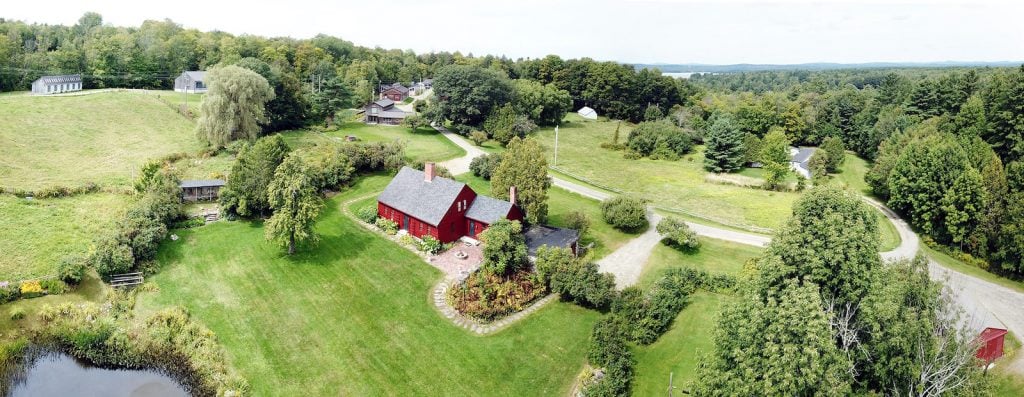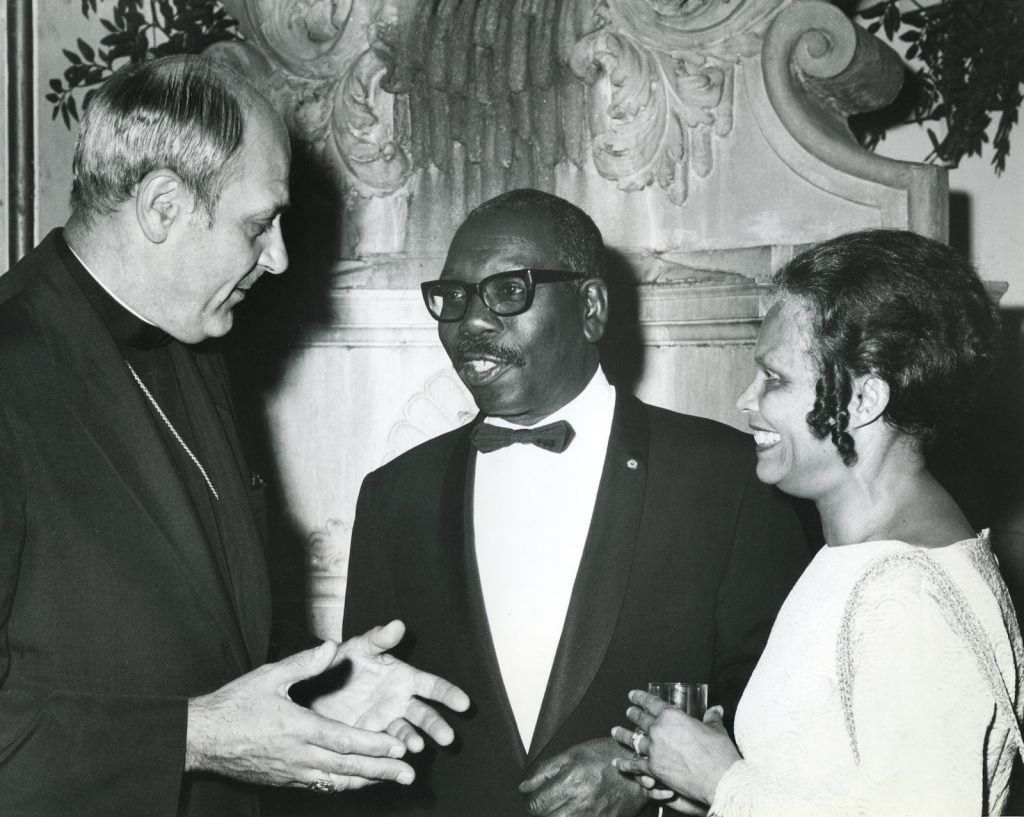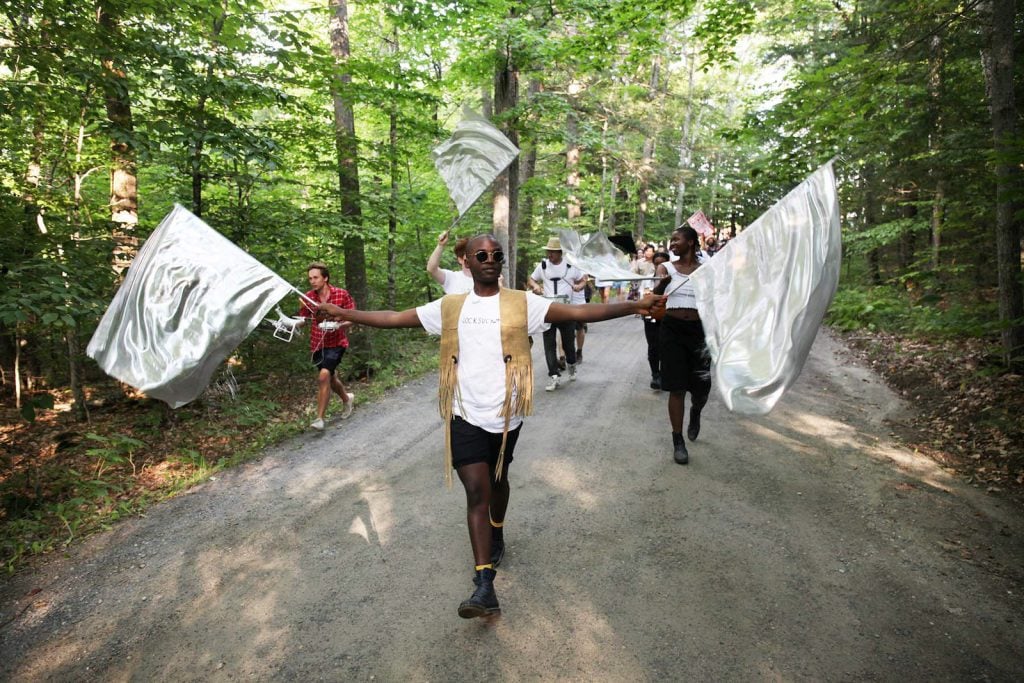It was nine months after the pandemic locked down much of America, and the directors of Maine’s renowned Skowhegan School of Painting and Sculpture faced a challenge.
Summer 2020 was only the second year ever that the school was not in session, and no one wanted 2021 to be the third. But it was practically impossible to predict what the next year would look like. (The Delta variant wasn’t even a factor yet.)
Co-directors Katie Sonnenborn and Sarah Workneh knew that if they admitted a class for the summer of 2021, it would have to be much smaller than the usual 65, to provide for social distancing. This would make for far fewer opportunities to network and be exposed to other artists’ practices.
“And wouldn’t that be a bummer?” Workneh said dryly, in an interview in her office this summer.
Instead, they devised a solution to offer something the school had never offered before: two shorter sessions for smaller groups of alumni, allowing graduates the previously unheard-of opportunity to return to campus, and to celebrate its diamond (75th) anniversary. (It was an equally unprecedented chance for a writer to visit, as press is usually verboten.)
“It’s like the Navy Seals,” artist Henry Taylor told Artnet News. “An elite thing.” He was among the faculty in 2018. He didn’t just teach, but also collaborated with some of the resident artists on performances. And despite being in pain from a recent hip replacement (his doctor urged him not to follow through on the invitation), he couldn’t say no to the chance. “You don’t want to call in sick.”

An aerial view of the upper campus and Red Farm at Skowhegan. Courtesy the Skowhegan School of Painting & Sculpture.
Founded by four artists in 1946, Skowhegan has evolved into a program that is not exactly a school or a residency or a retreat, but combines some characteristics of each. Faculty teach various skills, but there are no classes; participants come from all over the world to take advantage of nine weeks to create, think, and read; and the setting, a 350-acre campus on Wesserunsett Lake in the town of Madison, with a population of fewer than 5,000, is worthy of a restorative retreat.
Among the recent visiting artists have been Theaster Gates, Josh Kline, Ryan Trecartin, and Lizzie Fitch. The attendees, too, are exceptional: between 2008 and 2018, the acceptance rate was a truly Navy Seals-like three percent (by comparison, Harvard’s is four percent).
The program occupies the family farm of co-founder Willard W. Cummings. But it has also expanded over time through the purchases of adjacent properties (visiting artists are lodged at the Cummings family home). Its offerings range as widely as do the media contemporary artists customarily use, or even wider—it’s one of the only U.S. schools to teach the ancient art of fresco. (The fresco barn is not far from the computer lab, complete with modern stereo systems, cameras, and a green-screen stage.)
The facilities bear the names of supporters, but where a donor’s name at a college might appear in bronze, at Skowhegan, you’ll find hand-painted signs announcing the Louise Nevelson studio, the Moffett-Gober studio, or the Acquavella sculpture shop. Some of these long-standing studios are in converted chicken coops and horse stalls. There are several of more recent vintage, too. The program runs on an annual budget of about $2 million, raised via an annual gala, gifts from foundations and well-heeled supporters, and plentiful support from artists.
Skowhegan has notably served as an incubator for many artists of color. Among the Black alumni who have gone on to acclaim are Laylah Ali, Pope.L, Whitfield Lovell (a MacArthur fellow), Shinique Smith, and Hank Willis Thomas. The leadership has also prominently featured people of color, including Workneh and former director Linda Earle, now a professor at Tyler School of Art and Architecture.

Artists Jacob Lawrence and Gwendolyn Clarine Knight at Skowhegan in 1974. Courtesy Skowhegan School of Painting & Sculpture.
Alumni regaled this reporter with some of the lessons they learned the summer they attended the program. Taking a break from sculpting serving bowls for the dining hall, Cathy Fairbanks, class of 2011, recalled the artists who visited that year, including Vito Acconci, Suzan Frecon, and Dave McKenzie. But maybe the most memorable lesson came when she went jogging with Chris Ofili, who compared her artistic technique to her running form. “You’re just pulling,” he told her. “You’re not pushing. Use your ass!”
Accompanied by the sound of loons at lakeside picnic tables where artists and faculty dine when the weather is favorable, Robert Franca, class of 1972, recalled the impressive roster of artists who lectured that year, which included Jacob Lawrence, Alice Neel, and Louise Nevelson.
Hollywood legend Bette Davis, who had ties to Maine and sometimes attended lectures, interrupted Neel, Franca recalled, to say she would never let the artist paint her. But why, Neel protested? “You see too much,” Davis said.
“Well,” Neel said obliquely, “either you’re one thing, or the other.”








